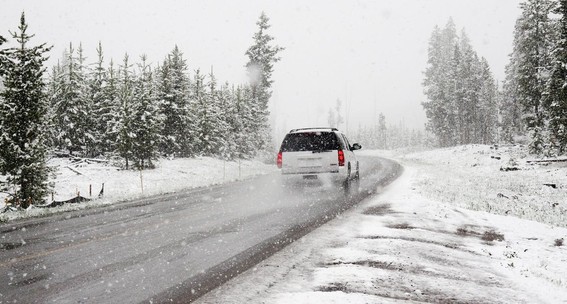
 Winter can do a lot of damage to your vehicle -- the combination of snow, ice, cold, and salt can kill batteries, chip away at paint, and cause deadly crashes. In fact, more than 116,000 Americans are injured and over 1,300 are killed on snowy, slushy, or icy pavement every winter. That's why you should always prep your car for winter.
Winter can do a lot of damage to your vehicle -- the combination of snow, ice, cold, and salt can kill batteries, chip away at paint, and cause deadly crashes. In fact, more than 116,000 Americans are injured and over 1,300 are killed on snowy, slushy, or icy pavement every winter. That's why you should always prep your car for winter.
In this article, we lay out five ways to get your car through the wintery months and stay safe on the road in hazardous driving conditions.
Change Your Wiper Blades
The build-up of winter precipitation can greatly reduce visibility. Working windshield wipers and a solid supply of wiper fluid will ensure you have a clear line of sight. Change your wiper blades to prepare your car for winter and consider buying more durable winter-ready wiper blades if you live in a harsher climate. As for wiper fluid, top off your reservoir with a brand that has been formulated with a lower freezing temperature.
Check Your Battery
When the weather gets cold, batteries tend to bite the dust. Make sure your battery cables and terminals are secure and free from fraying or corrosion. Any battery-acid corrosion can easily be cleaned with baking soda, water, and a toothbrush. Test your battery by turning on the headlights before starting the engine - if they get brighter once you start the engine, schedule an appointment with a mechanic for further electrical inspection. If your battery is more than 3 years old, it's a good idea to have it inspected by a mechanic.
Check Tire Tread Depth and Air Pressure
Checking tire pressure is something you should do on a regular basis, but especially when the seasons change -- since cold weather makes tires contract, and hot weather makes the air in the tires expand. You'll find your vehicle's recommended tire pressure inside the owner's manual.
Consider swapping your all-season tires out for winter tires, made of a softer rubber that allows them to retain flexibility in the bitterest of cold. If you will be using the same tires during the winter months, check the treads to make sure they aren't worn down. One way to do this is to take a penny and insert it into your grooves, Lincoln's head facing down. If you can still see all of Lincoln's head, your tires are balding and it's probably time to replace them.
Make Sure You Have Winter Tools in Your Car
Pack your ice scraper, booster cables, gloves, and other important winter tools in your car for easy access. In case of deeper snow, you may want to include a shovel for clearing paths and cat litter for improving traction on the ground. It's smart to winterize your car with these tools before the snow hits so that you're prepared.
Keep Your Fuel Tank Full
Although it's never a great idea to drive with a near-empty tank, the damage you might inflict on your car during winter is much worse. Cold temperatures can cause condensation to form on the walls of the gas tank, and if water finds its way into the fuel lines, it will freeze up, blocking the flow of gas to the engine. Any repairs that have to be made can be costly, too, so remember to always keep your tank full.
If you do fall victim to a car accident, especially if you suffer an injury, you may want to seek the advice of an attorney. Dugan & Associates are Pittsburgh's car accident attorneys, with the expertise to get you the compensation you deserve in your time of need. If you have questions, contact us for a consultation.
"*" indicates required fields